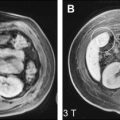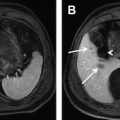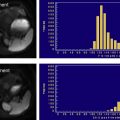Hepatocellular carcinoma (HCC) is a common malignancy typically associated with chronic liver disease and is a leading cause of mortality among these patients. Prognosis is improved when detected early. MRI is the best imaging examination for accurate diagnosis. Although arterial enhancement with delayed washout, increased T2-weighted signal intensity, delayed capsular enhancement, restricted diffusion, and tumor thrombus are typical features, not all lesions demonstrate these findings. The radiologist must be familiar with these typical imaging characteristics, and less common appearances and associated findings of HCC, and must be able to differentiate them from those of lesions that mimic HCC. Knowledge of therapeutic options and how those are related to imaging findings is imperative to assist clinicians in managing these patients.
Hepatocellular carcinoma (HCC) accounts for 85% to 90% of all primary liver malignancies. It is one of the most common cancers and the third leading cause of cancer mortality worldwide. Among American men, it is the fastest growing cause of cancer death. The incidence is at least twice as high in males as in females. A recent study showed that the incidence of HCC in the United States has tripled since 1975 from 1.5 per 100,000 to 4.9 per 100,000. Although mortality rates from HCC have also continued to rise with rising incidence of the tumor, 1-year survival rates have nearly doubled since 1992 from 25% to 47%. This may be in part related to more active screening programs and aggressive therapies.
The development of HCC is related to chronic liver inflammation that leads to fibrosis and cirrhosis. Although HCC can be seen in noncirrhotic patients with chronic viral hepatitis (HBV), toxin exposure, or other chronic liver diseases such as hemochromatosis, 70% to 90% of detected cases are seen in the setting of cirrhosis. Among patients with cirrhosis, the annual incidence of HCC is between 2% and 6%. Cirrhosis is a major underlying risk factor regardless of its etiology, although cirrhosis from viral hepatitis or hereditary hemochromatosis confers the highest risk among cirrhotic patients. Within the United States, hepatitis C virus (HCV) infection is the major underlying etiology of cirrhosis and subsequent development of HCC. It accounts for 50% of cases of HCC in the United States and Europe and up to 70% of cases in Japan. Alcoholic cirrhosis confers similar risk as that of other causes of cirrhosis, such as cryptogenic cirrhosis and primary biliary cirrhosis; however, alcohol abuse in the setting of chronic viral hepatitis or other chronic liver disease compounds the risk of HCC. Obesity is another compounding risk factor for the development of HCC in the setting of cirrhosis.
Hepatitis B virus (HBV) is the single most important risk factor for HCC worldwide. Although most HCCs related to HBV infection develop on a background of cirrhosis, HBV infection is an independent risk factor even without cirrhosis. Coinfection with HIV in the setting of HBV or HCV infection is associated with more rapid progression of the liver disease and development of HCC. The risk of development of HCC in the setting of certain other conditions such as autoimmune hepatitis (AIH) is debated. Nonalcoholic steatohepatitis and alpha1-antitrypsin deficiency are categorized as high-risk conditions for the development of HCC, although associated HBV or HCV infection may play a larger role in patients with alpha1-antitrypsin deficiency than the metabolic disorder itself. There is also an association between HCC and Budd-Chiari syndrome; however, the prevalence of HCC in this population is variable, suggesting that other factors, such as viral infection, play a role in the development of HCC in these patients as well.
HCC screening
The median survival period after diagnosis of HCC has been reported as less than 1 year. Unfortunately, prognosis after the onset of cancer-related symptoms is poor with 5-year survival being 0 to 10%. HCC lesions diagnosed at screening are generally smaller, more often subclinical and resectable, and have a significantly higher survival rate than those diagnosed without a screening program. One study demonstrated a 37% reduction in mortality attributable to biannual screening. Surveillance is generally recommended for populations where the risk of HCC is 1.5% per year or greater in non–hepatitis B carriers or 0.2% per year in hepatitis B carriers. The American Association for the Study of Liver Diseases (AASLD) recommended time interval for surveillance for HCC is 6 to 12 months. Patients on the transplant waiting list should also be screened at regular intervals because it may determine their transplant wait list status. The development of HCC in a patient on the transplant list provides increased priority as long as tumor burden is within the transplant criteria.
Stay updated, free articles. Join our Telegram channel

Full access? Get Clinical Tree






